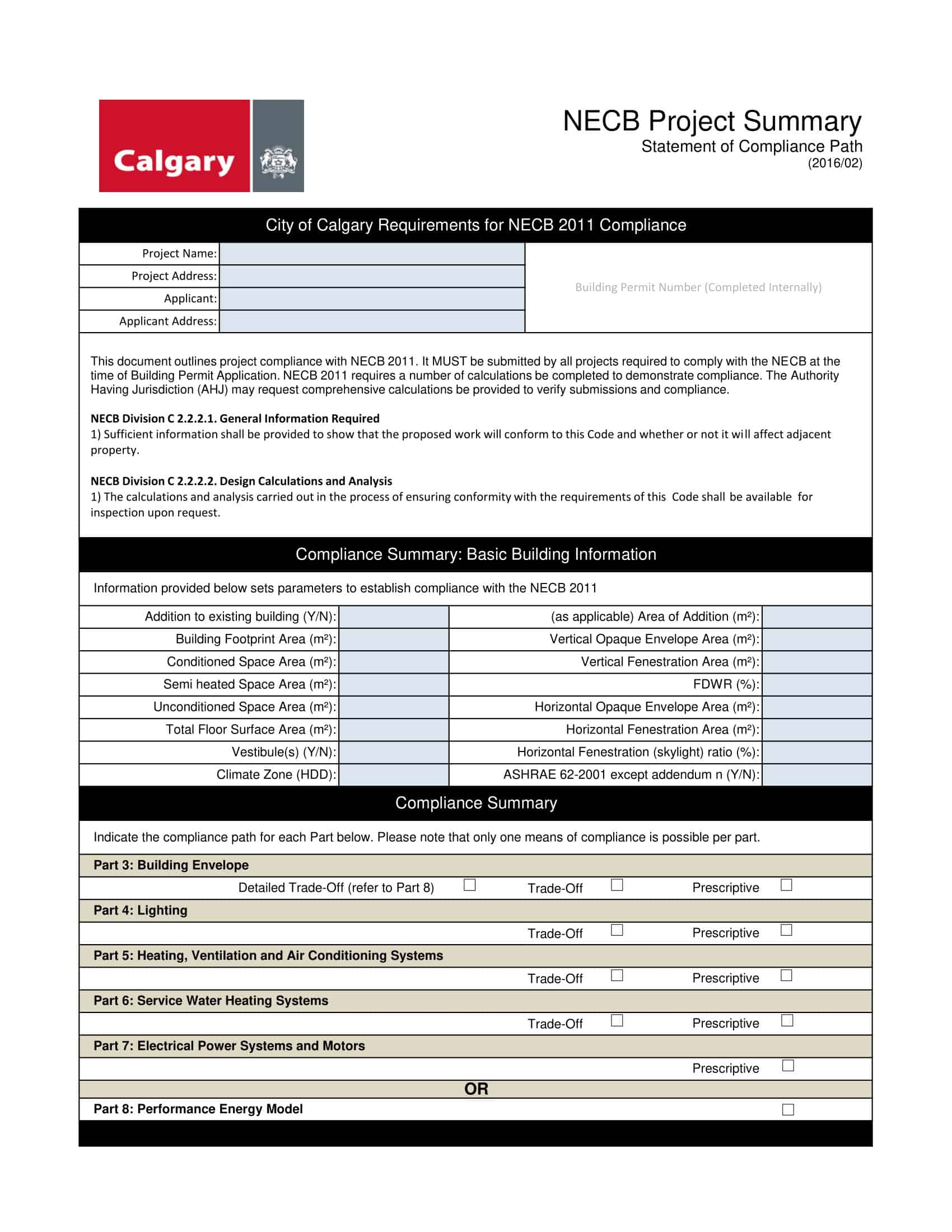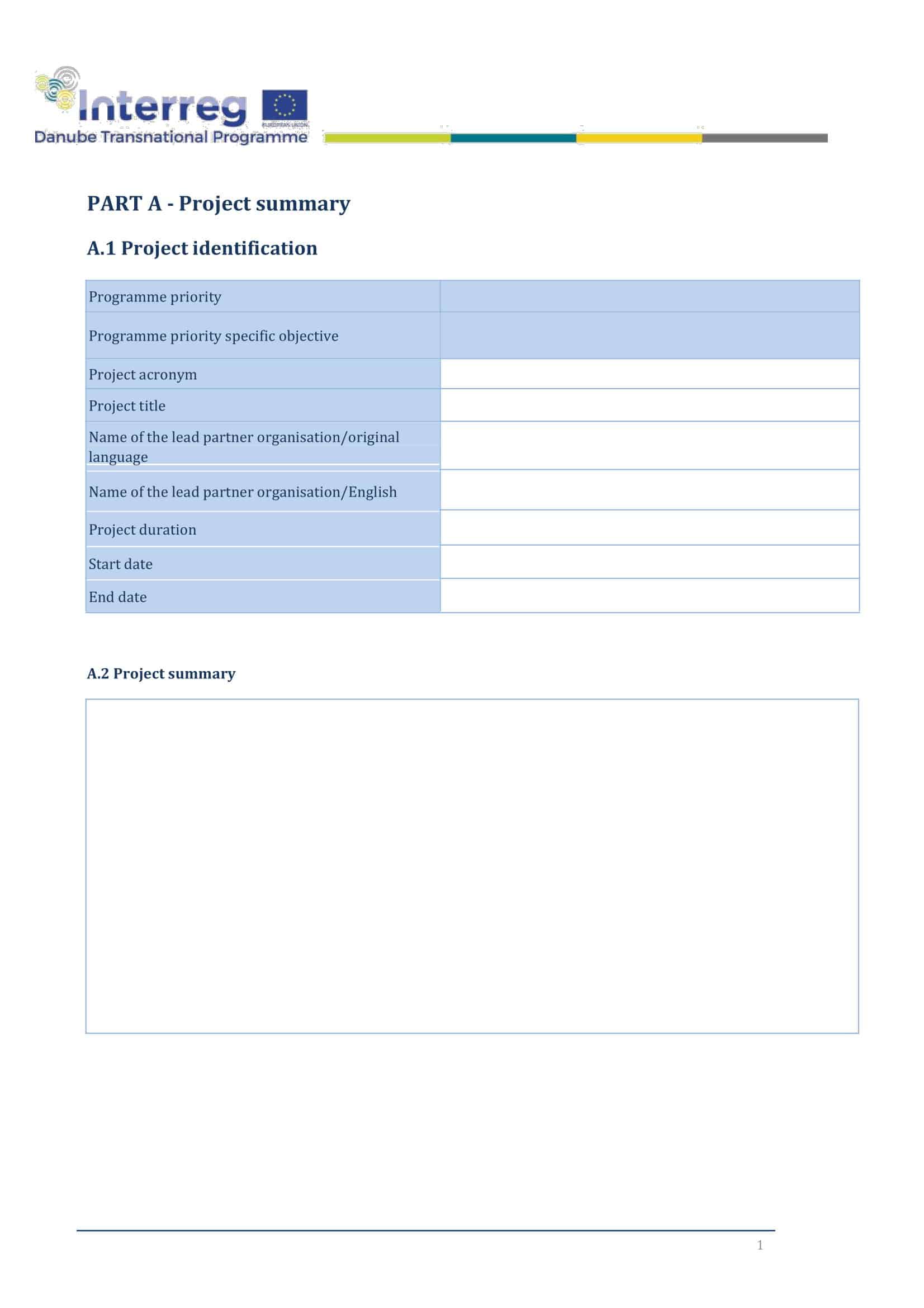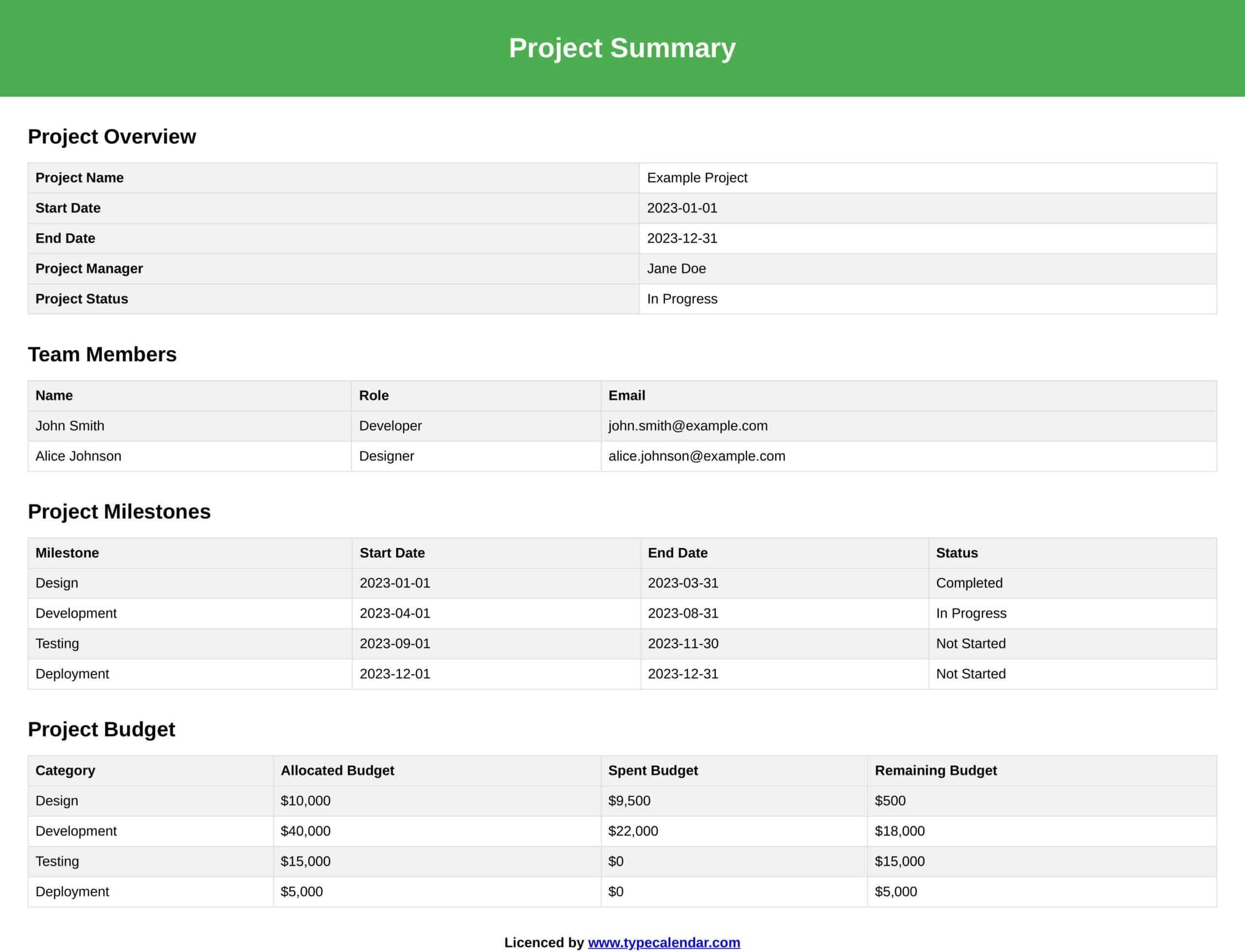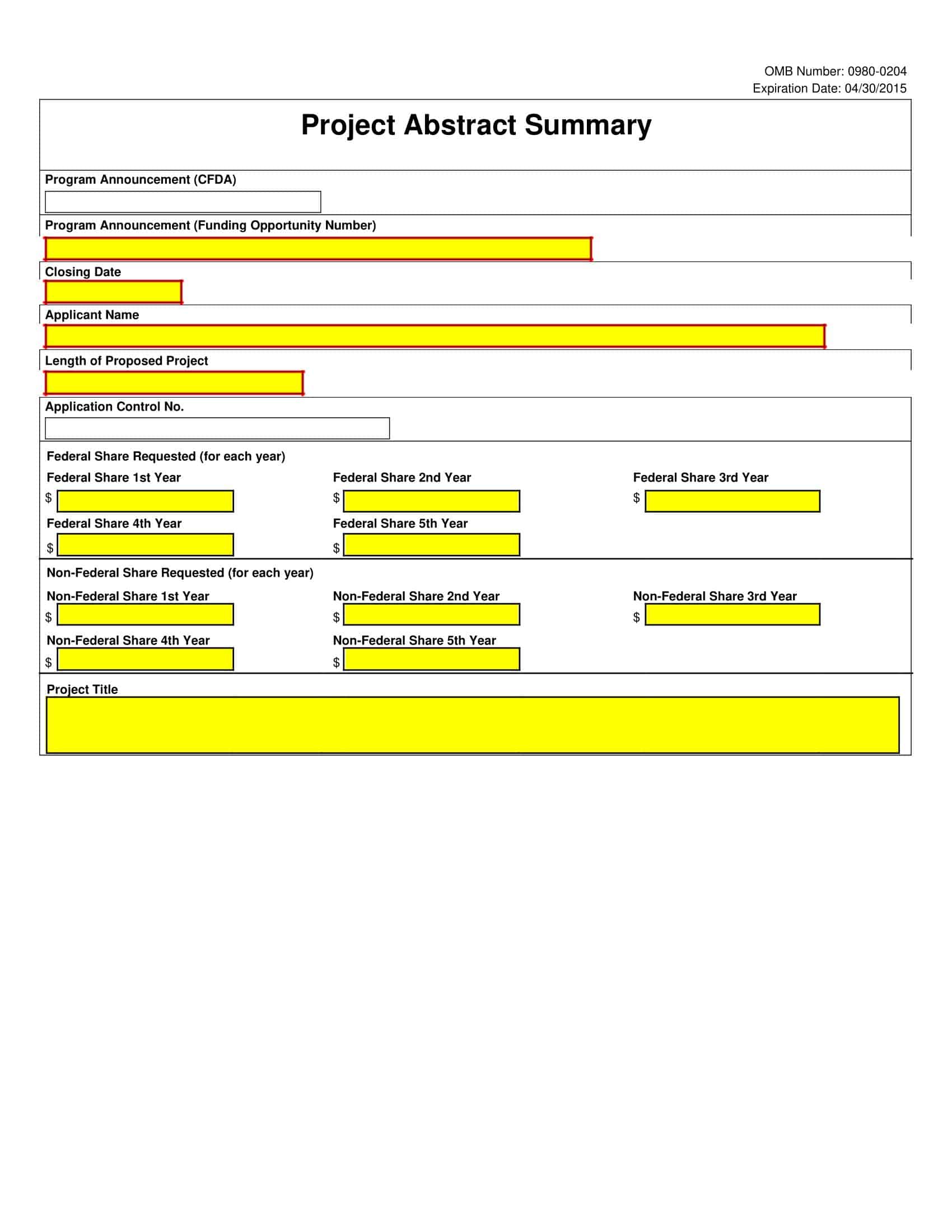The project summary is a critical component of any project proposal, as it serves as the first point of contact with reviewers and provides a high-level overview of the proposed project. Typically consisting of three sections – intellectual merits, project overview, and expected impact – the summary should clearly and concisely communicate the key aspects of the project to the reviewer.
This is your opportunity to make a strong first impression and convince the reviewer of the quality and significance of your proposed research. Crafting a well-written and compelling project summary can go a long way in ensuring that your proposal receives the attention it deserves. In this guide, we’ll provide you with some tips and best practices for writing an effective project summary that accurately reflects your proposed project and highlights its potential impact.
Table of Contents
Project Summary Templates
Project Summary Templates are pre-designed formats used to provide a concise and comprehensive overview of a project’s key details, goals, progress, and outcomes. These templates offer a structured framework for summarizing and presenting project information in a clear and organized manner.
Project Summary Templates help stakeholders, team members, and decision-makers quickly grasp the essential elements of a project, enabling effective communication, informed decision-making, and efficient project management.
Project Summary Templates provide a concise and structured approach to summarizing essential project information. By using these templates, project managers can effectively communicate the project’s key details, progress, and outcomes to stakeholders and decision-makers.
These templates facilitate transparency, alignment, and informed decision-making, allowing for efficient project management and effective collaboration. Project Summary Templates serve as valuable tools in various project environments, enabling stakeholders to quickly grasp the project’s purpose, scope, and progress, and contributing to successful project outcomes.
Why do you need project summary?

The project summary is a critical component of any project proposal, as it serves as the first point of contact with reviewers and provides a high-level overview of the proposed project. It is usually the first section of the proposal that reviewers read and is often used to determine whether the proposal meets the requirements of the funding agency or organization.
The summary includes three key sections – intellectual merits, project overview, and expected impact – and is designed to quickly communicate the proposed project’s key aspects to the reviewer. It provides a concise explanation of the research or project’s goals, methods, and expected outcomes, highlighting its potential impact and contribution to the field.
A well-crafted project summary can help grab the reviewer’s attention, generate interest in the proposed project, and demonstrate the researcher’s expertise and ability to carry out the project successfully. It is an opportunity to make a strong first impression and convince the reviewer of the quality and significance of the proposed research, increasing the chances of funding and project success.
What to include in the Project Summary ?
A project summary typically includes three key sections: intellectual merits, project overview, and expected impact. Here’s what each section should include:
Intellectual Merits: This section outlines the scientific or technical goals of the proposed project. It should highlight the innovative and novel aspects of the research and how it will advance the field. Intellectual merits may include the proposed research’s potential to address significant knowledge gaps, develop new theories or methods, or apply existing approaches in novel ways.
Project Overview: This section provides a high-level overview of the proposed project, including the research question, hypotheses, methodology, and anticipated outcomes. It should clearly and concisely explain the research design, including the procedures, participants, measures, and data analysis methods.
Expected Impact: This section highlights the potential impact of the proposed project, including its contribution to the field, potential benefits to society, and practical applications. It should explain how the research will advance knowledge, lead to new discoveries, or solve existing problems.
In general, the project summary should be clear, concise, and written in a way that is easy for the reviewer to understand. It should highlight the significance and potential impact of the proposed project and provide a compelling reason for the funding agency or organization to invest in the research.
How to Write a Project Summary
Here is a step-by-step guide to writing a project summary:
Understand the Purpose of the Project Summary
The first step in writing a project summary is to understand its purpose. The project summary serves as an overview of the proposed project and is often the first document that reviewers read. It should clearly and concisely communicate the significance and potential impact of the proposed research to the reviewer. The summary should be well-crafted and provide a compelling reason for the funding agency or organization to invest in the project.
Identify the Key Sections
The project summary typically consists of three sections: intellectual merits, project overview, and expected impact. Each section serves a specific purpose, and it is important to identify and understand them before starting to write.
Write the Intellectual Merits Section
The intellectual merits section outlines the scientific or technical goals of the proposed project. It should highlight the innovative and novel aspects of the research and how it will advance the field. To write this section, ask yourself the following questions:
- What are the key research questions?
- What is the significance of the proposed research?
- What are the innovative and novel aspects of the research?
- How will the proposed research advance the field?
Write a clear and concise paragraph that answers these questions and outlines the intellectual merits of the proposed project.
Write the Project Overview Section
The project overview section provides a high-level overview of the proposed project, including the research question, hypotheses, methodology, and anticipated outcomes. To write this section, ask yourself the following questions:
- What is the research question or problem?
- What is the proposed methodology?
- What are the anticipated outcomes?
- What are the key steps in the research process?
Write a clear and concise paragraph that answers these questions and outlines the project overview.
Write the Expected Impact Section
The expected impact section highlights the potential impact of the proposed project, including its contribution to the field, potential benefits to society, and practical applications. To write this section, ask yourself the following questions:
- What is the potential impact of the proposed research?
- How will the research advance knowledge?
- What are the potential benefits to society?
- What are the practical applications of the research?
Write a clear and concise paragraph that answers these questions and outlines the expected impact of the proposed project.
Edit and Revise
Once you have written the project summary, it is important to edit and revise it to ensure that it is clear, concise, and well-crafted. Make sure that the summary flows smoothly and is easy to read. Check for grammatical errors and typos, and ensure that the summary is within the required word or page limit.
Seek Feedback
Before submitting the project summary, it is a good idea to seek feedback from colleagues or mentors. They can provide valuable feedback on the clarity, coherence, and persuasiveness of the summary. Incorporate their feedback and revise the summary as necessary.
Some Tips to Remember While Writing a Project Summary
Here are some tips to remember while writing a project summary:
Keep it brief and to the point: A project summary should be a concise overview of your project, so keep it brief and focused on the most important aspects. Aim for a length of one to two pages.
Know your audience: Make sure you know who your audience is and what they are looking for in a project summary. Tailor your summary to the specific needs and interests of the reviewers.
Use clear and concise language: Use clear and concise language to describe your project and its goals. Avoid using jargon or technical terms that may be unfamiliar to your audience.
Highlight the most important points: Focus on the most important points of your project, such as the research question, objectives, methods, results, and potential impact.
Include a clear and concise project title: The title of your project should be clear and concise, and accurately reflect the scope and focus of your research.
Use bullet points or headings: Use bullet points or headings to organize your summary and make it easy to read and navigate. This can help reviewers quickly identify the key points of your project.
Be persuasive: Use your project summary to persuade reviewers that your project is important, innovative, and well-designed. Highlight the potential impact of your project and explain why it is significant.
Edit and proofread carefully: Edit and proofread your project summary carefully to ensure that it is well-written, error-free, and easy to read. Ask a colleague or mentor to review your summary before you submit it to ensure that it is effective and persuasive.
FAQs
Who is the audience for a project summary?
The audience for a project summary may vary depending on the context. It could be grant reviewers, journal editors, or colleagues in your field.
How long should a project summary be?
A project summary should be brief and to the point. Aim for a length of one to two pages.
What is the difference between a project summary and an abstract?
A project summary and an abstract are similar in that they both provide a brief overview of a research project. However, an abstract is typically shorter and more focused on the methodology and results, while a project summary may also include information on the objectives, potential impact, and significance of the research.
Can a project summary be revised?
Yes, a project summary can be revised as needed. It is important to review and revise the summary as the project progresses and new information becomes available.
How can I make my project summary stand out?
To make your project summary stand out, focus on the most important aspects of your research project, use clear and concise language, highlight the potential impact of your project, and tailor the summary to the specific needs and interests of the reviewers.
Can a project summary be used for multiple purposes?
Yes, a project summary can be used for multiple purposes, such as grant applications, research proposals, conference presentations, and journal articles. However, it is important to tailor the summary to the specific context and audience.
Should a project summary include references?
No, a project summary should not include references. It should be a stand-alone document that provides an overview of the project without going into too much detail.
What should I do if I am struggling to write a project summary?
If you are struggling to write a project summary, consider seeking feedback from colleagues or mentors in your field. They can help you identify the most important aspects of your research and provide feedback on how to communicate them effectively.
How should I format my project summary?
The format of your project summary may vary depending on the context. Generally, it should be formatted as a stand-alone document with a clear and concise title, a brief introduction, sections on the research question, objectives, methods, potential impact, and key findings, and a conclusion that ties everything together.
What are some common mistakes to avoid when writing a project summary?
Some common mistakes to avoid when writing a project summary include using jargon or technical language that may be difficult for non-experts to understand, including too much detail or irrelevant information, and failing to clearly communicate the significance and potential impact of the research.
How can I ensure that my project summary is effective?
To ensure that your project summary is effective, focus on communicating the most important aspects of your research project in a clear and concise manner, highlighting the potential impact and significance of your work, and tailoring the summary to the specific needs and interests of the reviewers. It can also be helpful to seek feedback from colleagues or mentors in your field.










































![Free Printable Project Plan Templates [Excel, PDF, Word] 1 Project Plan](https://www.typecalendar.com/wp-content/uploads/2023/06/Project-Plan-150x150.jpg)
![%100 Free Hoodie Templates [Printable] +PDF 2 Hoodie Template](https://www.typecalendar.com/wp-content/uploads/2023/05/Hoodie-Template-1-150x150.jpg)
![Free Printable Project Scope Templates [Word, Excel, PDF] Example 3 Project Scope](https://www.typecalendar.com/wp-content/uploads/2023/05/Project-Scope-1-150x150.jpg)
